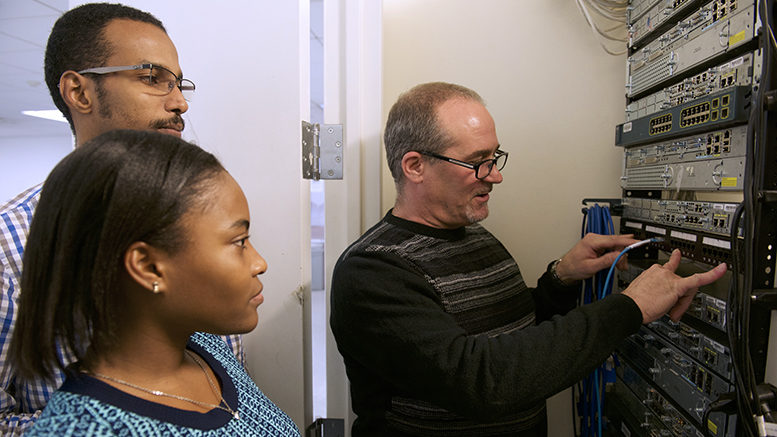When the Great Recession hit in December 2007 and extended into 2009, key industry sectors imploded and unemployment in the United States more than doubled, to 10 percent.
In New York, Borough of Manhattan Community College’s (BMCC) Center for Continuing Education and Workforce Development met the recession by bolstering workforce certification and educational programs to align with employment growth in technology, health services and other areas. The college worked closely with local employers to identify workforce opportunities, and our efforts were supported by city and state agencies, which provided training funds for students eager to re-enter the job market.
Today’s crisis is much different. The pandemic has caused a sudden economic free fall of unprecedented scale. All 50 states have declared emergencies, and while a few employment areas like delivery and warehouse services — as well as healthcare — are functioning, most sectors are reeling. First-time jobless claims have reached 38.6 million (including an additional 2.4 million Americans last week) and the unemployment rate is expected to reach over 15 percent nationwide.
Hitting communities of color harder
In New York City, communities of color have been disproportionately hit by the pandemic. Preliminary information from the city’s health department shows black and Hispanic New Yorkers are infected at a much higher rate, comprising nearly 62 percent of all confirmed deaths from COVID-19. Three New York City boroughs — Queens, Brooklyn and the Bronx — have each had more deaths than any other county in the country.
These are the communities of our students — 71 percent of whom earn less than $30,000 a year, many below the poverty level. Two-thirds of job losses in New York City are now among persons of color, with Latinx workers bearing 32 percent of lost jobs. Black and Asian workers also have been proportionately affected, and 36 percent of all workers with a high school education or less have lost jobs, compared to 20 percent of those with a four-year college degree or better.
At BMCC, we also serve a large population of immigrant students, and according to an April 2020 report from the New School Center for New York City Affairs, foreign-born workers who held 49 percent of all private jobs before the pandemic crisis account for 54 percent of the lost jobs.
These are dire statistics and point to inequity in how unemployment impacts communities in NYC.
Our role in post-COVID equity
It is important though to keep in mind that the COVID-19 pandemic will at some point end, and we will have to strengthen our resolve to ensure that access to our city’s workforce development initiatives is not a byproduct of socioeconomic privilege. We are also aware that when our dormant economy starts to awaken, employers may be cautious in their re-hiring and may leverage this as an opportunity to lower labor costs through automation or out-sourcing for lower wages and benefits.
This is where community colleges can play a critical role in protecting the equity of our workforce development response. We need to work closer than ever with local community-based organization (CBO) partners. We have to partner with employers who are shifting their employment needs, and we must continue to stay aligned with federal, state and city initiatives that can support key industry sectors in both their contingency and long-term recovery plans.
In addition, a workforce development response would not be complete without a focus on the basic education of individuals who seek to enter the job market at an entry level and build up from there. I believe that literacy is job training, and state and federal support is key in continuing this vital work.
BMCC has been developing industry advisory boards to ensure our institution is engaged with industry needs. Workforce development leaders in New York City have a fundamental role to play, along with city and state agencies shaping our city’s future to be more just and equitable by working together to build partnerships to leverage workforce training funds.
We can build a lifeline for individuals looking beyond stop-gap measures to long-term solutions, who are seeking to gain a foothold on the path to a family-sustaining career. With the right partnerships and support in place, workforce development is positioned to make that happen.

